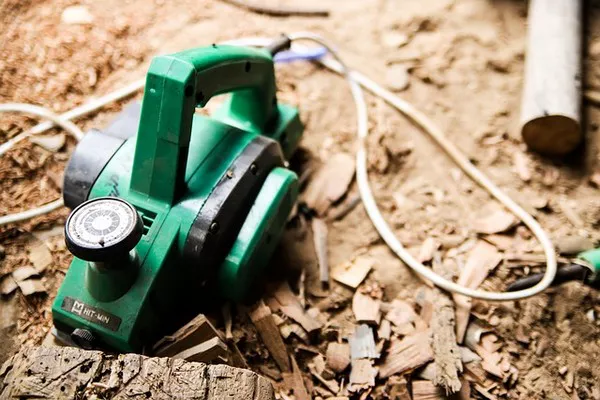When it comes to safeguarding against fires involving electrical equipment, selecting the appropriate fire extinguisher is crucial. Using the wrong type can not only be ineffective but also potentially dangerous. Let’s delve into the key considerations and recommended types of fire extinguishers for electrical fires.
Understanding the Fire Triangle: Why is it Critical for Electrical Fires?
Before delving into fire extinguisher types, it’s vital to grasp the concept of the fire triangle: a fire requires heat, fuel, and oxygen to sustain. Electrical fires, however, pose unique challenges. Unlike fires fueled by ordinary combustibles, electrical fires do not typically involve solid materials; instead, they originate from the flow of electric current. Traditional water-based extinguishers, though effective on ordinary fires, are unsuitable for electrical fires due to the risk of conducting electricity and potentially escalating the hazard. When considering the appropriate fire extinguisher for electrical equipment, it’s essential to prioritize safety and efficacy.
Classifications of Fire Extinguishers: Which Types are Suitable for Electrical Fires?
Fire extinguishers are categorized by the type of fire they can extinguish, denoted by lettered classes. For electrical fires, Class C extinguishers are specifically designed. These extinguishers utilize non-conductive agents that effectively suppress fires involving live electrical equipment. Class C extinguishers commonly use dry chemical agents like monoammonium phosphate, which interrupts the chemical reaction of the fire. These agents are non-conductive, making them safe to use around live electrical equipment. It’s imperative to avoid using water or foam-based extinguishers on electrical fires, as they can cause electric shock or further damage the equipment. Additionally, CO2 (carbon dioxide) extinguishers, classified as Class BC, are suitable for electrical fires due to their non-conductive properties and ability to displace oxygen, thus suffocating the fire without leaving residue that can damage equipment.
Dry Chemical Extinguishers: How Do They Suppress Electrical Fires?
Dry chemical fire extinguishers are widely recommended for combating electrical fires. These extinguishers contain a dry powder composed of sodium bicarbonate or potassium bicarbonate, which chemically interrupts the combustion process. When applied to an electrical fire, the dry chemical agent forms a barrier between the fuel and the oxygen, effectively smothering the fire. The powder also helps to cool down the heat source, further aiding in fire suppression. However, it’s essential to exercise caution when using dry chemical extinguishers indoors, as the powder can create a significant mess and may be irritating if inhaled.
CO2 Extinguishers: How Do They Safely Extinguish Electrical Fires?
CO2 fire extinguishers are another reliable choice for electrical fires. Unlike dry chemical extinguishers, CO2 extinguishers work by displacing oxygen, effectively suffocating the fire. CO2 is a non-conductive and inert gas, making it safe for use on electrical equipment. When discharged, CO2 rapidly cools the surrounding air and reduces the oxygen concentration, inhibiting the fire’s ability to sustain itself. This type of extinguisher is especially useful for enclosed spaces or areas with sensitive electrical equipment, as it leaves no residue that could damage the components. However, due to the risk of asphyxiation in confined spaces, CO2 extinguishers should be used with caution, and adequate ventilation is recommended.
Considerations for Effectively Using Fire Extinguishers on Electrical Equipment: What Are the Best Practices?
Effectively using a fire extinguisher on electrical equipment requires following specific guidelines to ensure safety and maximize effectiveness. First and foremost, assess the situation to confirm it is safe to use an extinguisher. If the fire is spreading rapidly or if you are unsure about the type of fire, evacuate immediately and alert emergency services. When using a fire extinguisher on an electrical fire, remember the acronym “PASS”:
- Pull: Pull the pin to break the tamper seal.
- Aim: Aim the nozzle or hose at the base of the fire, standing several feet away.
- Squeeze: Squeeze the handle to discharge the extinguishing agent.
- Sweep: Sweep the nozzle from side to side, covering the base of the fire until it is completely extinguished.
Additionally, always keep in mind the limitations of fire extinguishers. They are designed for small, contained fires and are not a substitute for professional firefighting services. After using an extinguisher, even if the fire appears to be out, contact emergency services to ensure the fire is fully extinguished and that there is no risk of reignition.
Conclusion
Selecting the appropriate fire extinguisher for electrical equipment is a critical aspect of fire safety. By understanding the unique challenges posed by electrical fires and choosing the correct type of extinguisher, individuals can effectively mitigate risks and protect both lives and valuable assets. Remember, safety is paramount—when in doubt, prioritize evacuation and alerting professional emergency services. Regular training in fire safety procedures and the proper use of fire extinguishers can significantly enhance preparedness and minimize the impact of electrical fires.

